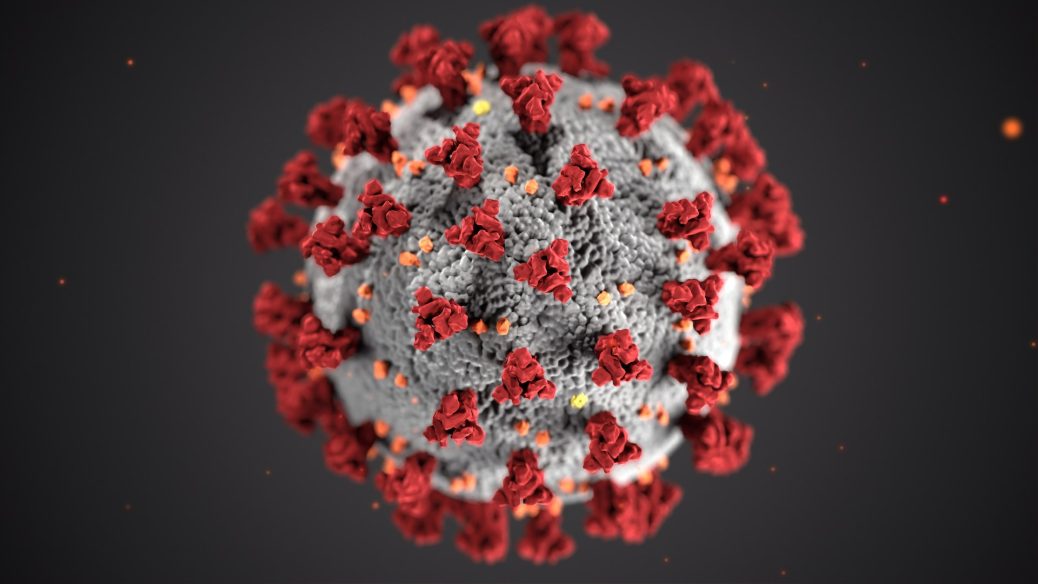Discover 20 effective tips and remedies for treating baby rashes at home during the summer. Learn how to keep your baby’s skin cool, clean, and protected from irritants, along with natural remedies and precautions to provide relief and comfort.
Here are 20 tips and remedies for treating baby rashes at home in hot summer:
Keep the area clean
Gently wash the affected area with mild soap and lukewarm water. Avoid scrubbing or using harsh products that may irritate the skin further
Change diapers often
This is the most important thing you can do to prevent and treat diaper rash. A wet or soiled diaper can irritate the skin and lead to a rash. Aim to change diapers at least every two hours, and more often if your baby is having diarrhea.
Avoid scratching
Scratching can further irritate the rash and lead to potential complications or infections. Try to resist the urge to scratch and keep your nails short. If necessary, wear cotton gloves at night to prevent scratching while asleep.
Apply cool compresses
Use a clean cloth soaked in cold water or a cold compress to soothe the rash and reduce itching or inflammation. Apply it to the affected area for about 15 minutes at a time, several times a day.
Use a Mild Cleanser
When you need to clean your baby’s bottom, use a mild, unscented cleanser. Avoid using harsh soaps or wipes, as these can irritate the skin.
Pat dry the skin
Don’t rub the skin when you’re drying it. Rubbing can further irritate the skin and make the rash worse.
Apply a protective cream
After you’ve cleaned and dried your baby’s bottom, apply a protective cream or ointment. Look for a cream that contains zinc oxide or petrolatum. These ingredients can help create a barrier that protects the skin from moisture and irritation.
Let the skin air dry
If you can, let your baby’s bottom air dry for a few minutes before putting on a new diaper. This will help the skin to heal.
Use a barrier cream at night
If your baby tends to get diaper rash at night, apply a barrier cream before bed. This will help protect the skin from moisture while your baby sleeps.
Avoid using baby wipes
Baby wipes can irritate the skin, especially if they contain alcohol or fragrance. If you do use wipes, choose a fragrance-free, alcohol-free variety. 9-12 Months Baby Development
Switch diaper brands
If your baby has sensitive skin, they may be allergic to the materials in their current diaper brand. Try switching to a different brand to see if it helps.
Change laundry detergent
If you’ve recently changed laundry detergent, your baby may be having a reaction to it. Try switching back to your old detergent or try a fragrance-free, hypoallergenic detergent.
Give your baby’s bottom a break
If your baby has a severe diaper rash, you may want to give their bottom a break from diapers for a few hours. This will allow the skin to air dry and heal.
Try oatmeal baths
Oatmeal baths can help soothe a diaper rash. Add a few cups of colloidal oatmeal to a warm bath and let your baby soak for 10-15 minutes.
Use aloe vera
Aloe vera is a natural anti-inflammatory that can help soothe a diaper rash. Apply a thin layer of aloe vera gel to the affected area.
Use calendula
Calendula is another natural anti-inflammatory that can help soothe a diaper rash. Apply a calendula cream or ointment to the affected area.
Identify and eliminate possible triggers
Pay attention to any potential triggers that may be causing or aggravating the rash. It could be an allergic reaction to certain foods, exposure to specific substances, or contact with certain plants. Try to identify these triggers and avoid them to prevent future outbreaks.
Keep a rash diary
If you experience recurrent rashes, keeping a record of potential triggers and symptoms can be helpful. Note down any changes in diet, exposure to new products or environments, and other relevant factors. This diary can assist you in identifying patterns and triggers, which can guide you in avoiding them in the future.
Use witch hazel
Witch hazel is a natural astringent that can help dry out a diaper rash. Apply a witch hazel wipe or astringent to the affected area.
Breast milk
Some parents swear by using breast milk to soothe a diaper rash. Apply a small amount of breast milk to the affected area and let it air dry.
Dealing with Newborn Baby Crying: Best 12 Tips and Strategies
Here is some additional information about tips and remedies for using and treating baby rashes at home in summer:
Use a diaper rash cream or ointment every time you change your baby’s diaper
Using a diaper rash cream or ointment every time you change your baby’s diaper is an important way to prevent diaper rash. These creams and ointments create a barrier between the skin and moisture, which can help protect the skin from irritation.
When choosing a diaper rash cream or ointment, look for one that contains zinc oxide or petrolatum. These ingredients are effective at creating a barrier and protecting the skin. You can also find creams and ointments that contain other ingredients, such as aloe vera or calendula, which can help soothe a rash that has already developed.
It is essential to apply the cream or ointment liberally to the entire diaper area, including the folds of the skin. You should also reapply the cream or lotion after each diaper change, especially if your baby has a tendency to get diaper rash.
If your baby has a severe diaper rash, you may want to see a doctor. They may prescribe a stronger cream or ointment, or they may recommend other treatment options.
Make sure the diaper fits snugly but not too tightly
It is important to make sure that the diaper fits snugly but not too tightly. A diaper that is too tight can irritate the skin and lead to diaper rash. A diaper that is too loose can allow moisture to escape, which can also lead to diaper rash.
To check if the diaper fits correctly, you should be able to fit two fingers between the diaper and your baby’s skin. The diaper should also not be riding up or down. If the diaper is too tight, you may see red marks on your baby’s skin.
Avoid using plastic pants or tight-fitting clothing over the diaper
It is important to avoid using plastic pants or tight-fitting clothing over the diaper. These can trap moisture against the skin, which can lead to diaper rash.
Plastic pants are made of a waterproof material that prevents moisture from escaping the diaper. This can create a warm, moist environment that is ideal for bacteria growth. This can lead to diaper rash.
Tight-fitting clothing can also trap moisture against the skin. This can also create a warm, moist environment that is ideal for bacteria growth. This can lead to diaper rash.
If you need to use plastic pants, make sure that they are loose-fitting. You can also try using a breathable diaper cover instead of plastic pants.
If you are unsure if a particular type of clothing is safe to use over a diaper, you can ask your doctor or a nurse for advice.
Let your baby’s bottom air dry for a few minutes after each diaper change
Let your baby’s bottom air dry for a few minutes after each diaper change. This will help the skin to heal and prevent diaper rash. When you change your baby’s diaper, pat the skin dry with a soft, clean cloth. Do not rub the skin, as this can further irritate it. If you are using baby wipes, choose a fragrance-free, alcohol-free variety. After patting the skin dry, let it air dry for a few minutes before putting on a new diaper. This will help the skin to breathe and heal. If your baby has a severe diaper rash, you may want to leave its bottom completely exposed for a few hours each day. This will give the skin a chance to completely dry out and heal.
Change diapers as soon as they get wet or soiled
It is important to change diapers as soon as they get wet or soiled. This will help prevent diaper rash.
A wet or soiled diaper can irritate the skin and lead to diaper rash. The moisture can cause the skin to become red and inflamed. The stool can also contain bacteria that can irritate the skin.
If you wait too long to change a diaper, moisture, and bacteria can have a chance to build up, which can make the rash worse.
To prevent diaper rash, try to change diapers at least every two hours, and more often if your baby is having diarrhea. If you are out and about, you can use disposable diaper liners to protect your baby’s skin until you can change their diaper.
Wash your hands thoroughly before and after changing your baby’s diaper
Yes, it is important to wash your hands thoroughly before and after changing your baby’s diaper. This will help prevent the spread of germs and infection.
When you change your baby’s diaper, you may come into contact with stool and urine, which can contain harmful bacteria. If you do not wash your hands thoroughly, you could transfer these bacteria to your own hands and then to other surfaces, such as the kitchen counter or the doorknob. This could lead to the spread of infection.
To wash your hands thoroughly, wet your hands with soap and warm water. Lather your hands for at least 20 seconds, making sure to scrub all surfaces. Rinse your hands well and dry them with a clean towel.
If you do not have access to soap and water, you can use an alcohol-based hand sanitizer. However, hand sanitizer is not as effective as soap and water, so it is best to use soap and water whenever possible.
Here are some other tips for preventing the spread of germs when changing your baby’s diaper:
- Use a clean diaper and wipes each time you change your baby’s diaper.
- Avoid using public restrooms if possible. If you must use a public restroom, use a diaper changing station if one is available.
- If you are changing your baby’s diaper in a public place, put a disposable diaper liner on the changing table before you start. This will help protect your baby’s skin from any germs that may be on the changing table.
- Throw away any dirty diapers and wipes immediately.
By following these tips, you can help prevent the spread of germs and infections when changing your baby’s diaper.
Conclusion
The article has provided parents more than 20 effective tips and remedies for treating baby rashes at home during the summer. It has a combination of preventive measures, gentle care, and natural remedies. By keeping your baby’s skin cool, clean, and well-hydrated, using breathable clothing, avoiding potential irritants, and implementing soothing remedies, you can help alleviate discomfort and promote healing.
However, it’s important to closely monitor the rash and seek medical advice if it persists or worsens. With these 20-plus tips and remedies, you can provide your little one with the care they need to enjoy a rash-free and comfortable summer season.
Outboundsource
- https://www.mayoclinic – The Mayo Clinic website offers comprehensive and trustworthy medical information. Their section on baby care provides valuable insights into managing common baby rashes and skin conditions.
- https://healthychildren.org – This website is operated by the American Academy of Pediatrics and provides reliable and evidence-based information on various child health topics, including rashes and skin care for babies.


